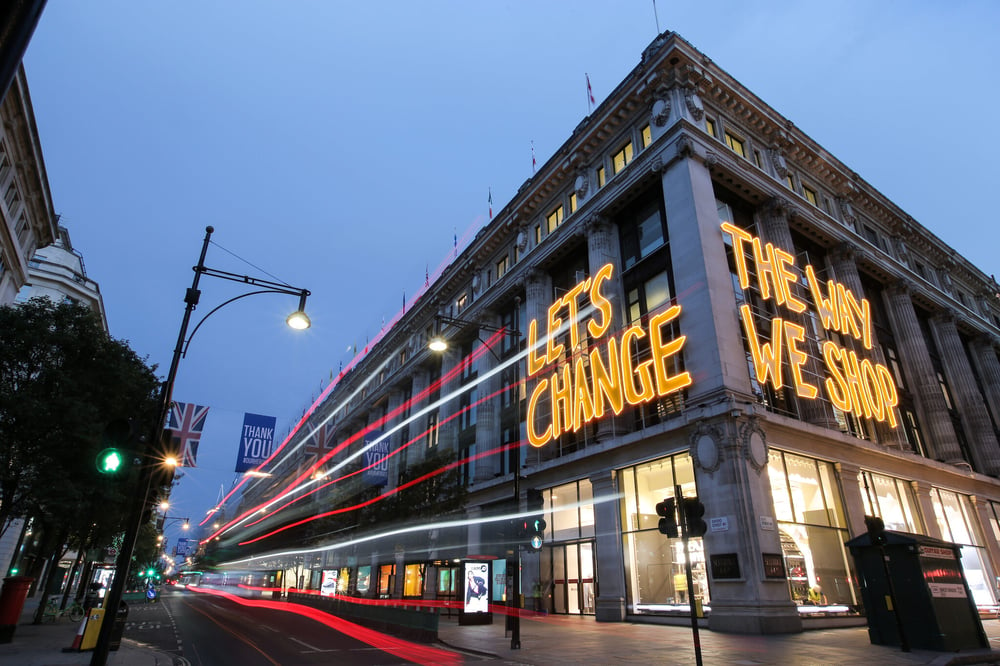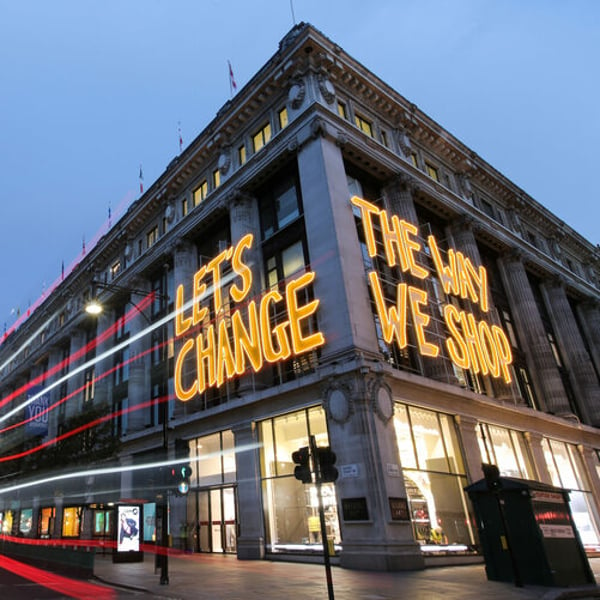Only 11% of the fashion sector’s market value is on track to meet 2030 decarbonisation goals but new research shows exactly where carbon cuts and commercial value align, and how AI could be the unexpected accelerator for both. It also highlights the importance — and challenges — of secondhand and how crucial it is to influence supplier behaviour as sourcing is where it all starts.

That’s all according to a new Bain & Company study that says decarbonising the fashion and luxury industry is “no longer a side initiative, but a critical business imperative that will reshape industry dynamics over the next decade”.
Fashion accounts for around 2% of global emissions, so that 11% figure quoted earlier is concerning, But how did Bain arrive at it?
It used a “marginal cost of abatement curve (MACC) to compare potential decarbonisation levers and their returns on investment (ROI)”. Looking at fashion apparel and luxury separately, the MACCs were developed from aggregated public data, focused on near-term targets, and modelled emissions growth through 2030 in line with expected market growth.
One critical decarbonisation lever for fashion apparel is sourcing and Bain saids that “while shifting to recycled materials is an important first step, the bigger opportunity lies in influencing supplier behaviour such as using lower-emission methods of manufacturing”.
It added that for luxury, “durability and lower impact per wear are intrinsic to brands’ business models. Cutting overproduction and scaling resale would be important levers to focus on. Luxury’s high gross margins mean that brands tend to overlook overproduction to avoid stock-outs. However, unsold inventory not only erodes margins, but also carry environmental costs which are increasingly under regulatory scrutiny particularly in Europe”.
So where does AI come into it all? The report recommends using AI to help brands “address overproduction and improve inventory efficiency”.
We’re told that AI-powered sales forecasting is already in use or being tested by approximately 60% of fashion brands, “enabling more accurate predictions of consumer demand across styles, sizes, and geographies”.
In parallel, “around half of brands are leveraging AI to allocate stock more precisely. Technology is also enabling new production models, where brands are beginning to pilot made-to-order and made-to-measure approaches that significantly reduce waste by producing only what is needed”.
Of course, this isn’t just about what companies want to do because as well as their customers demanding a more sustainable attitude, regulation is also pushing fashion towards circularity by banning inventory destruction and supporting resale. Upcoming EU regulations requiring digital product passports (DPPs) “could unlock new possibilities by doubling fashion products’ lifetime value – with consumers reaping the rewards,” Bain said.
And getting there won’t be easy. For instance, secondhand is often held up as the way forward. But the report found that secondhand remains a “negative-ROI decarbonisation lever for most brands as profitability is lower with majority of secondhand sales taking place on third-party platforms. Additionally, emissions are only reduced when secondhand volumes grow at the expense of firsthand volumes”. To counter this barrier, brands need to turn secondhand into a “profitable, brand-owned channel that drives both customer lifetime value and emissions reductions”.
“Secondhand is fundamental to reaching the SBTi near-term target and DPP is a critical element to remove friction and cost to the overall channel. Done right, resale can shift from margin drain to margin growth—and become a credible and scalable decarbonisation tool,” said Matteo Capellini, a partner from the Sustainability & Responsibility practice at Bain.
“Fashion and luxury’s decarbonisation journey is a complex one. What we’ve done is break down into immediate priorities and longer-term actions that companies can leverage to reduce carbon impact and still maintain commercial value. In the near term, we found that AI could improve demand forecasting and reduce e-commerce returns — two areas where inefficiency drives both emissions and margin erosion. But the bigger challenge lies in turning performance into habit. That means treating decarbonisation not as a standalone initiative, but as a business discipline embedded in sourcing, supply chain, inventory management, and product strategy.”
Copyright © 2025 FashionNetwork.com All rights reserved.










